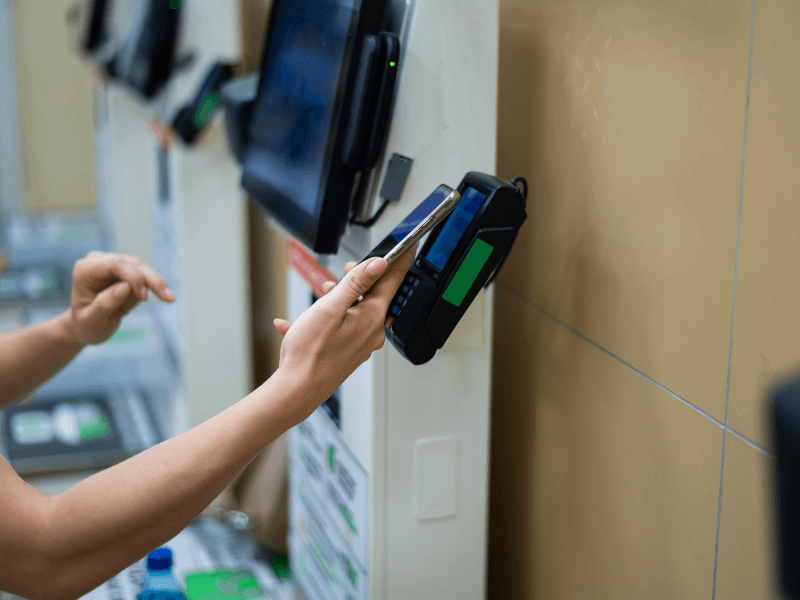Are you tired of watching potential customers make a beeline for the checkout, only to abandon their shopping carts and walk out the door empty-handed? It's frustrating, we know. And while shopping cart abandonment is often associated with online sales, in-person abandonment can be just as detrimental to your business.
So how does shopping cart abandonment affect retailers?
In fact, in-store shopping cart abandonment is a common frustrating problem that can seriously hurt your sales, customer relationships, and profitability, as around 40% of shoppers ditch their carts before making a purchase. That's a lot of lost sales - and we all know that every sale counts!
But fear not, we're here to help. In this article, we'll take a closer look at the reasons why shoppers abandon their carts in-store and the impact it can have on your business. Plus, we'll share some strategies that you can use to reduce in-store shopping cart abandonment and keep those sales rolling in. So, whether you're a small business owner or a large retailer, read on to learn how you can tackle this common problem and boost your bottom line.
How Does Shopping Cart Abandonment Affect Retailers?
You've invested time and resources into creating an inviting shopping experience, so why do some customers walk away before completing their purchase? Let's take a closer look at the reasons behind in-store shopping cart abandonment.
- Long Wait Times
We've all been there: standing in line for what feels like an eternity, watching the clock tick down, and wondering if it's worth it. When shoppers are faced with long wait times, they may start to rethink their purchase and ultimately decide to abandon their cart and leave. So, if your store is consistently understaffed or your checkout process is slow, it's time to make some changes.
- High Prices
Let's face it, no one likes to feel ripped off. If a shopper gets to the checkout and realizes that the total cost of their items is much higher than they expected, they may decide to abandon their cart and leave in frustration. So, make sure that your pricing is clear and transparent throughout the store, and avoid any surprises at checkout.
- Lack of Assistance
We've all experienced the frustration of walking into a store and not being able to find what we're looking for. And when you finally turn to seek assistance, there's no one in sight. This type of experience can lead shoppers to abandon their carts and ultimately leave the store empty-handed.
- Uncomfortable Environment
Shopping should be an enjoyable experience, but if your store is too hot, too cold, too loud, or too crowded, shoppers may decide to abandon their carts and leave.
- Lack of Trust
Building trust with customers is essential to the success of any retail business. If shoppers don't trust your store or brand, they may be hesitant to make a purchase, and this can lead to lower sales and reduced profitability.
Impact of In-Store Shopping Cart Abandonment on Retailers
Now that we've explored the various reasons why customers may abandon their shopping carts in-store, it's important to understand the impact it can have on your business.
Spoiler alert: it's not good.
Lost Sales

First and foremost, in-store shopping cart abandonment can result in significant revenue loss. In fact, research indicates that the average retailer loses up to $18 billion in sales each year due to abandoned carts.
Reduced Customer Loyalty
When shoppers abandon their carts in-store, they're not just walking away from a potential purchase, they're also walking away from your brand. This can lead to reduced customer loyalty and word-of-mouth recommendations, ultimately hurting your business in the long run.
Wasted Resources
When a customer abandons their cart, the time and effort that your staff spent assisting them becomes wasted. This can lead to a decrease in productivity and efficiency, resulting in increased costs for your business.
Negative Brand Image

Finally, in-store shopping cart abandonment can also lead to a negative brand image. If shoppers consistently have a poor experience in your store and abandon their carts, word will quickly spread and potential customers may be deterred from even entering your store.
So, what can you do to reduce in-store shopping cart abandonment and mitigate these negative impacts on your business?
Strategies to Reduce In-store Shopping Cart Abandonment

Here are a few proven ideas that can help reduce in-store shopping cart abandonment and improve your sales:
Streamline the checkout process: One of the most common reasons for in-store shopping cart abandonment is a lengthy and complicated checkout process. To avoid this, make sure your checkout process is streamlined and straightforward, by investing in self-checkout machines. These tools can be valuable in streamlining the checkout process in retail stores.
By offering customers the option to scan and bag their items themselves, these machines can reduce wait times and make the checkout experience more efficient. Additionally, self-checkout machines can provide a variety of payment options, such as credit cards, mobile payments, and cash, to cater to different customer preferences.
Offer incentives: One way to combat in-store shopping cart abandonment is by using smart shelves to offer incentives to customers. These shelves are equipped with technology that allows retailers to display dynamic promotions and special offers, such as discounts, freebies, and exclusive deals. By using data analysis and machine learning, smart shelves can identify the items that shoppers are interested in and offer relevant incentives to encourage them to complete their purchase.
For instance, a customer who has been contemplating a product for a while can be enticed to make the purchase by receiving a personalized coupon or discount for that item. By leveraging smart shelves, retailers can boost their sales, increase customer loyalty, and enhance the overall shopping experience for their customers.
Improve Store Layout and Organization: Sometimes, shoppers abandon their carts simply because they can't find what they're looking for. To avoid this, make sure your store is well-organized and easy to navigate. Ensure that all items are clearly labeled and displayed in a logical manner. Also, make sure your store layout is conducive to easy navigation, and that high-traffic areas are well-staffed to help customers locate products.
Train Your Staff: In-store shopping cart abandonment can also result from poor customer service. Ensure that your staff is trained to provide exceptional customer service and are able to answer customer questions and concerns. This can go a long way in building customer trust and loyalty.
Finishing Up
In-store cart abandonment is a problem for retailers, but it’s not an unsolvable one. It's important to understand its impact on your bottom line and implement the various effective strategies to combat this problem and improve your business's profitability.
By offering incentives through smart shelving, streamlining the checkout process with self-checkout machines, and ensuring a positive shopping experience overall, you can encourage customers to complete their purchases and increase their loyalty.
Remember, every abandoned cart represents a missed opportunity, so take the necessary steps to keep customers engaged and satisfied. By doing so, you'll not only boost your sales but also strengthen your reputation as a retailer that cares about its customers.
Want to learn more about how does shopping cart abandonment affect retailers? Reach out to us today or check out our range of products.




